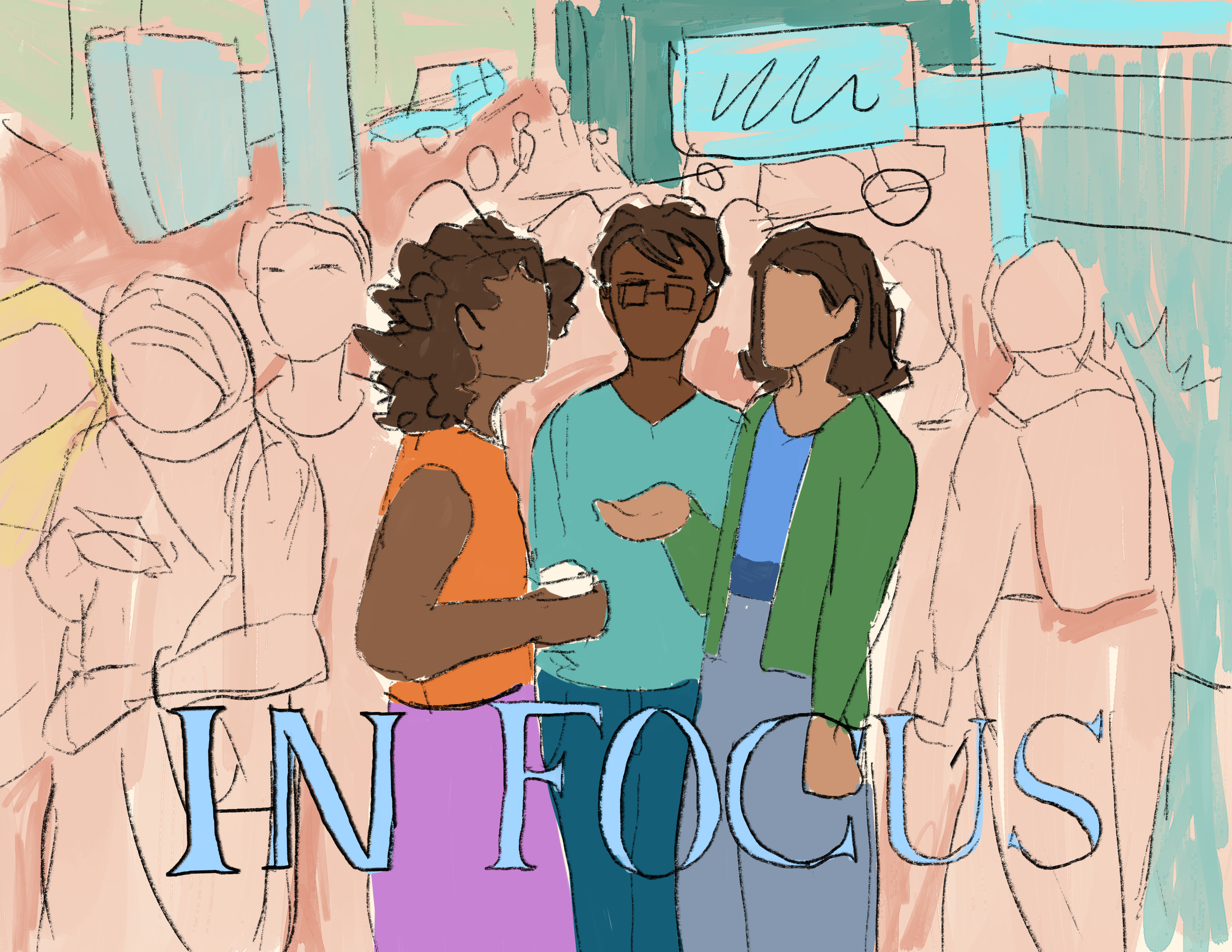Srithanya Satish ’27 analyzes films that spotlight the diverse and vibrant South Asian experience in her column, “In Focus: South Asian stories through film.”
A modest sex worker. A pacifist aggressor. A 40-year-old virgin. Director Venkatesh Maha challenges all classes, divisions and boundaries in “C/o Kancharpalem” (2018). The movie tells four rural tales of characters trying to find love amid entrenched societal prejudice. Set in the locality of Kancharpalem in Andhra Pradesh, India, the movie delves into the characters whose lives seamlessly coalesce through a multi-linear narrative. With these raw relationships set across age, caste and religion among a caring yet conservative backdrop, we, too, fall in love with the characters’ bold defiance and acceptance in their truthful quest for love and self.
The portrait of love — pure yearning that transcends all generations — is a key tenet to follow in this movie. Innocent, schoolboy Sundaram (Kesava Karri) casts a doting, doe-eyed gaze toward classmate Sunitha (Nithyasri Goru) amid the pouring rain. Eager, middle-aged Gaddam (Mohan Bhagath) overflows in giddy anticipation for a mystery woman who regularly stops by at his local alcohol shop. These heartfelt approaches toward love and companionship invoke a sense that we are all excited little kids at heart.
Yet, this film also parallels the initial light-hearted nature of love with its real-life consequences. Can a 49-year-old finally find love — what would society think? Can a known sex worker find genuine love — what would society do? The suffocating norms and conceptions of society are completely challenged as Maha develops each character to detail the non-conforming nature and universality of love.
The implicitly defined structure of society is adeptly framed by cinematographers Varun Chaphekar and Aditya Javvadi. We see the backs of schoolchildren neatly laid out in an array wearing their khaki-colored and white uniforms, as they sit in the tight, gray classroom. Raju, the 49-year-old unmarried man, sits off to the side of the lunch table at his workplace and in the margins of our screen, as the higher-ranked and higher-caste workers sit squarely in the middle.
These reinforcing long frames, though, are directly countered by the close-ups shots of joy — the triumph of individuality pokes through overarching norms. At the school culture show, we finally see the close-up shots of kids’ joyous and vibrant faces as their peers sing and dance on stage. Radha (Radha Bessy), a new employee at Raju’s company, passionately takes up space and invites Raju to sit at the lunch table through a resounding, moral assertion. She takes control of the narrative, followed by the camera.
“C/o Kancharpalem” ensured to strike the delicate balance of the small town’s understated moments with charged moments of societal contention. Oppressive authority figures stand in front of every character. Sunitha’s father doesn’t let her sing at the school culture show, widowed Radha is shamed by her brother for bringing up remarriage in her 40s, Bhargavi’s (Praneetha Patnaik) father threatens her for wanting to marry a Christian as a Brahmin (high-caste) girl.
I found the blinding rage in these male characters baseless at first — until I realized how they were conflated with pre-existing societal expectations. Glaring double standards struck once again. Radha’s brother’s stigmatization of Raju as a lonely orphan conflicted with his own supposed family values as he violently chastised Radha. Bhargavi’s father’s blackmailing and aggression against marrying a Christian went against his Hindu principles of tolerance and peace. By weaponizing violence, these families became a symbol of order and conformity rather than love.
Radha’s daughter erupts in one scene into a solemn call: “Will a woman ever be able to live life on her own terms?” Her conviction echoed throughout the scene and her blazen voice broke through conceptions of her own youth and self-autonomy. All of the film’s female characters end up boldly breaking through the construct of femininity — whether it means openly drinking alcohol, singing, or falling in love unconditionally. And they do so even if it means retaliation.
Though the various love stories that emerge are challenged throughout the movie, one love is constant — the communal love for Kancharpelam itself. The movie poignantly sets up intricate scenes of village life through a subdued, authentic and tight-knit lens. Extended scene sequences pan to Raju strolling through the blue paint-chipped corners and narrow alleyways of the village. He passes by women cooking fresh fish curry, craftsmen hammering furniture and priests worshiping their local idols. Schoolchild Sundaram and his friend run in the rain, shielded by a dried banana leaf umbrella.
The bright yellows, reds and cheery bells of Bharatanatyam (a prominent South Indian classical dance) are juxtaposed with the hearty church bell toll that rings for the overlooked Christian minority. Even the folksy buoyancy of the music is anchored by the profound lyrics crafted by Raghukul and Vishwa, echoing the simple joys of rural life. Maha reinforces the duality yet common community of people in this interconnected story, by portraying a realistic village life.
“C/o Kancharpelam” is an homage to love and the titular village itself, grounded in reality while highlighting struggles of a patriarchal society. The film’s ultimate hopeful lens toward fate and love makes us appreciate our shared humanity all the more.
Editor’s Note: This article is a review and includes subjective thoughts, opinions and critiques.
